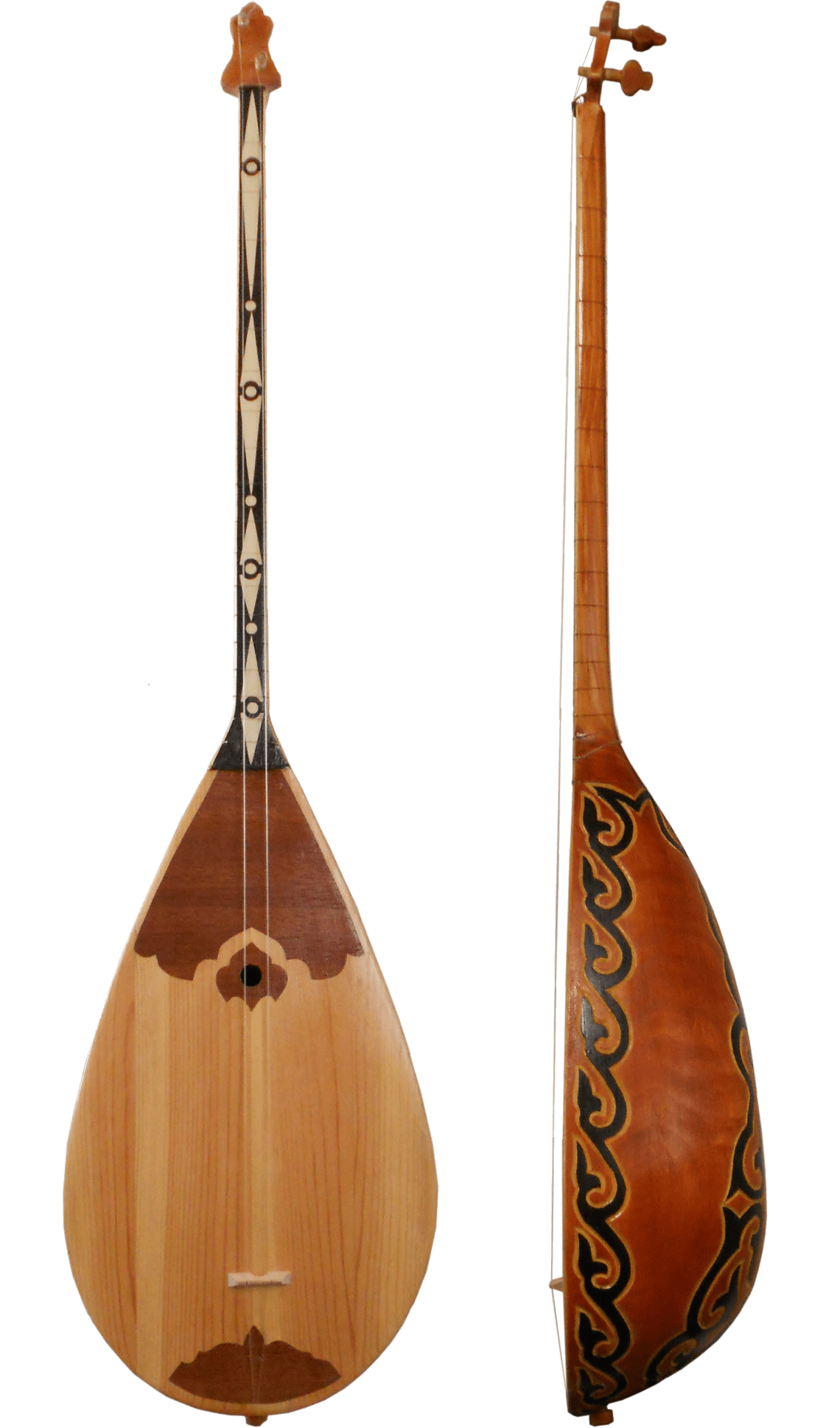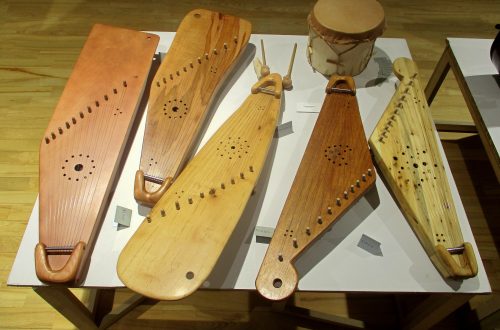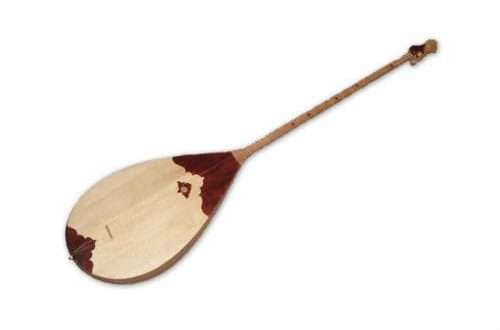
Dombra: what is it, the structure of the instrument, history, legends, types, use
Contents
Dombra or dombyra is a Kazakh musical instrument, it belongs to the type of stringed, plucked. In addition to the Kazakhs, it is considered a folk instrument of the Crimean Tatars (Nogais), Kalmyks.
The structure of the dombra
Dombyra consists of the following elements:
- Corps (shanak). Made of wood, shaped like a pear. Performs a sound amplification function. There are 2 methods of making the body: gouging from a single piece of wood, assembling from parts (wooden plates). Preferred wood species are maple, walnut, pine.
- Deca (kapkak). Responsible for the timbre of sound, its rhythmic coloring. Enhances the vibration of the strings.
- Vulture. It is a long narrow strip, larger than the body. Ends with a head with pegs.
- Strings. Quantity – 2 pieces. Initially, the material was the veins of domestic animals. In modern models, ordinary fishing line is used.
- Stand (tiek). An important element responsible for the sound of the instrument. Transmits the vibrations of the strings to the deck.
- Spring. The ancient tool was not equipped with a spring. This part was invented to improve the sound, the spring is located near the stand.
The total size of the dombra fluctuates, amounting to 80-130 cm.
History of origin
The history of dombra goes back to the Neolithic era. Scientists have discovered ancient rock paintings dating from this period depicting a very similar musical instrument. This means that the fact can be considered proven: the dombyra is the oldest of the stringed plucked structures. Its age is several thousand years.
It has been established that two-stringed musical instruments were common among nomadic Saxons about 2 years ago. Around the same time, dombra-like models were popular with nomadic tribes living in the territory of present-day Kazakhstan.
Gradually, the tool spread throughout the Eurasian continent. The Slavic peoples simplified the original name to “domra”. The difference between domra and the Kazakh “relative” is a small size (maximum 60 cm), otherwise the “sisters” look almost the same.
The two-stringed songstress was especially fond of the Turkic nomadic peoples. Nomadic Tatars played it before the battle, strengthening their morale.
Today, the dombyra is a revered national instrument of Kazakhstan. Here, since 2018, a holiday has been introduced – Dombra Day (date – the first Sunday of July).
An interesting fact: the closest relative of the Kazakh songstress is the Russian balalaika.
Legends
There are several legends about the origin of dombra.
The appearance of the instrument
Immediately 2 ancient stories tell about the emergence of dombyra:
- The legend of dombra and giants. Two giant brothers lived high in the mountains. Despite their relationship, they were completely different: one was hard-working and vain, the other was carefree and cheerful. When the first one decided to build a large bridge across the river, the second one was in no hurry to help: he made a dombyra and played it around the clock. Several days passed, and the cheerful giant did not start working. The hard-working brother got angry, grabbed a musical instrument and smashed it against a rock. The dombyra broke, but its imprint remained on the stone. Many years later, thanks to this imprint, the dombyra was restored.
- Dombira and Khan. During the hunt, the son of the great khan died. The subjects were afraid to tell the sad news to the family, fearing his wrath. People came for advice to the wise master. He decided to come to the Khan himself. Before the visit, the old man created an instrument, called it dombra. Playing a musical instrument told the khan what the tongue did not dare to say. Sad music made it clearer than words: misfortune had happened. Angered, the khan splashed molten lead in the direction of the musician – this is how a hole appeared on the body of the dombra.
The structure of the instrument, its modern appearance
There is also a legend explaining why the dombyra has only 2 strings. The original composition, according to legend, assumed the presence of 5 strings. There was no hole in the middle.
The brave dzhigit fell in love with the Khan’s daughter. The father of the bride asked the applicant to prove his love for the girl. The guy appeared in the khan’s tent with a dombyra, began to play heartfelt melodies. The beginning was lyrical, but then the horseman sang a song about the greed and cruelty of the khan. The angry ruler, in retaliation, poured hot lead onto the body of the instrument: in this way, 3 out of 5 strings were destroyed, and a resonator hole appeared in the middle.
One of the stories explains the origin of the threshold. According to him, the hero, returning home, got bored, made a dombyra. Horsehair became the strings. But the instrument was silent. At night, the warrior was awakened by enchanting sounds: the dombra was playing on its own. It turned out that the reason was a nut that appeared at the junction of the head and neck.
Types
The classic Kazakh dombra is a two-string model with standard body and neck sizes. However, to expand the possibilities of sound, other varieties are created:
- three-stringed;
- bilateral;
- with a wide body;
- vulture;
- with a hollow neck.
Story
The dombyra range is 2 full octaves. The system can be quantum or fifth.
The setting depends on the nature of the piece of music. The low tuning is convenient for playing and prolonging the vibrations of the sound. High requires a lot of effort, but in this case the melody sounds clearer, louder. The high system is suitable for mobile works, the performance of melismas.
String characteristics are important for pitch: the thicker the line, the lower the sounds produced.
Dombra use
String groups of instruments are the most revered in Kazakhstan. In ancient times, not a single event could do without akyns-singers: weddings, funerals, folk festivals. Musical accompaniment necessarily accompanied epic tales, epics, legends.
Modern masters have expanded the scope of dombra: in 1934 they managed to reconstruct it, create new orchestral types. Now the most ancient instrument of the planet is a full member of the orchestra.


Watch this video on YouTube





